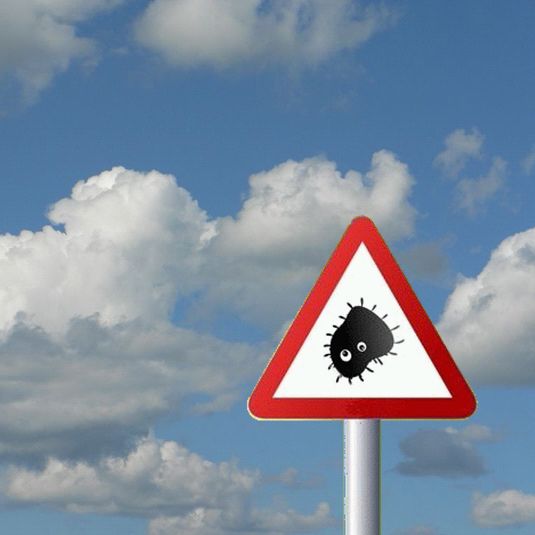 |
|

Geog 696C (Physical Geography, 3 units)
Spring 2010, Wednesdays, 4:00-6:30 p.m., Harvill 452
Instructor: Dr. Andrew Comrie (comrie@arizona.edu) 621-3512
Office Hours: by appointment
Schedule, Readings & Assignments (restricted)
Instructor's Web Page
This graduate seminar focuses on the role of climate in the ecology of human infectious diseases. In particular, it will examine the climatic dimensions of applicable ecological and social processes, abiotic and vector-related determinants, population dynamics of vector and reservoir species, and transmission to humans. Weekly seminar topics will cover a cross-section of disease ecologies, agents and vectors. Possibilities include Lyme disease, lymphatic filariasis, malaria, dengue fever, Chagas disease, Leishamaniasis, valley fever, influenza and more, depending on class interest. Suggestions are welcome.
Because of the intrinsic interdisciplinarity of the field, the class will feature weekly presentations and discussions on these topics by a range of leading experts from the UA, in addition to climate fundamentals and applications covered by the instructor. Invited guests speakers include specialists in epidemiology, medicine, veterinary science, geography, entomology, ecology, virology, and parasitology. It is expected that these guest presentations will fill roughly half of the available weeks. Student assignments include readings, presentations, critical discussion and reports. Graduate students from a variety of disciplinary backgrounds are welcomed and encouraged to join the class.
The following guest speakers have been confirmed:
- Peter Chesson (ecological theory, predator/prey systems)
- Kacey Ernst (infectious disease epidemiology, malaria)
- Mike Riehle (entomology, mosquito physiology & genetics)
- Paul Robbins (nature/society relations and institutions)
- Chuck Sterling (microbiology, cryptosporidium, giardia)
- James Tamerius (climate/health, influenza seasonality)
- Mike Worobey (evolutionary biology, influenza phylogenetics)
Topic Outline
The outline for the class is provided in the weekly schedule link above-left. Specific details, weekly announcements, updates, etc. beyond those listed will be distributed in class or via email.
Grades & Policies
Participation: True participation during each class meeting, as well as diligence on assignments and readings before and after each class, are essential. Simply attending class and/or attempting to participate by making ad-hoc comments will result in a low participation grade, as will poor or incomplete weekly assignments.
Readings & Review: Students are expected to pay detailed, close and critical attention to readings and assignments. For each class meeting, all students will read the assigned material and bring to class a summary with critique notes and discussion questions in response to the readings (up to about one page). These exercises will be turned in each week as part of the participation grade, and they will enable informed in-class discussion.
Paper Presentations: In addition to attending the weekly presentation/discussion by the instructor or the visiting guest speaker, each student will be responsible for presenting and leading several weekly sessions, with the schedule arranged in consultation with the instructor. The student leaders for each week will summarize a subset of the weekly readings and present one or more key papers. Students are required to prepare formal presentation materials following the guidelines below.
Grades: 30% on participation, reading responses and minor assignments; 70% on paper presentations (oral and written material).
Policies: Work submitted late may be subject to penalties. Absence/attendance, withdrawal, honesty and other policies as per the UA General Catalog.
Presenting and Leading Discussion
Come prepared to present material for ~20 minutes. Discussion will easily fill out an hour. Powerpoint slides with notes/handouts (or equivalent) are strongly suggested, 4-6 slides per handout page with light background to save ink and aid readability. Your talk will comprise 2 parts, a background to the topic and presentation of the paper itself. Edit your presentation ruthlessly: 20 minutes means no more than 20 slides, preferably 10!
Presentation Format*:
1. Background Section
a. Use this first section of your talk to introduce the broader topic, quickly getting into the key background material and shaping the context for the research to be presented in section 2.
b. Employ figures, text bullet points, a brief "board talk" or other approaches to make sure the class has a good foundation for the paper(s) to follow. Assume broad familiarity with the topic, consistent with textbook knowledge.
c. Focus on moving the class from this fundamental level to an appreciation of the key science questions/debates and the particular question examined in the paper(s).
2. Paper Review Section
a. In general, summarize information and emphasize the most important details. Do not simply reproduce text; do the work for the audience and include enough information to adequately explain all that was done and why.
b. Introduction
i. Discuss background rationale for study – why was the study done?
ii. Review significance of research question
iii. State hypotheses and/or aims
c. Methods
i. General description
ii. Help explain anything that is particularly complicated or not explained well in the text
iii. Do background reading of extra papers as appropriate to summarize the methods
d. Results
i. Synthesize and describe important results (often this will include key figures or tables)
e. Discussion
i. Summarize most important findings
ii. Did the authors address the aims/hypotheses?
iii. State limitations of the paper
iv. State anticipated impact
f. Discussion Questions
i. Is this work significant?
ii. Is this work new?
iii. Is the science well-designed and technically adequate?
iv. Are the conclusions justified?
v. Are there other papers out there that have reached different conclusions? Why are they different?
vi. What would be some interesting follow-up research?
vii. Any other relevant question(s) specific to the work
* Adapted from PNIJC Guidelines and Guidelines for Journal Club Presenters.